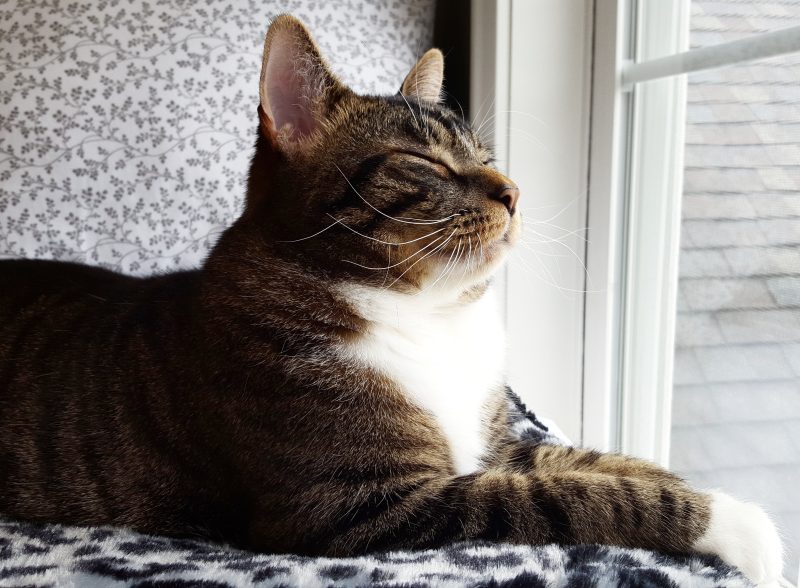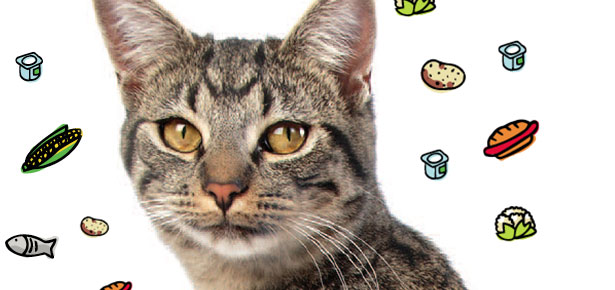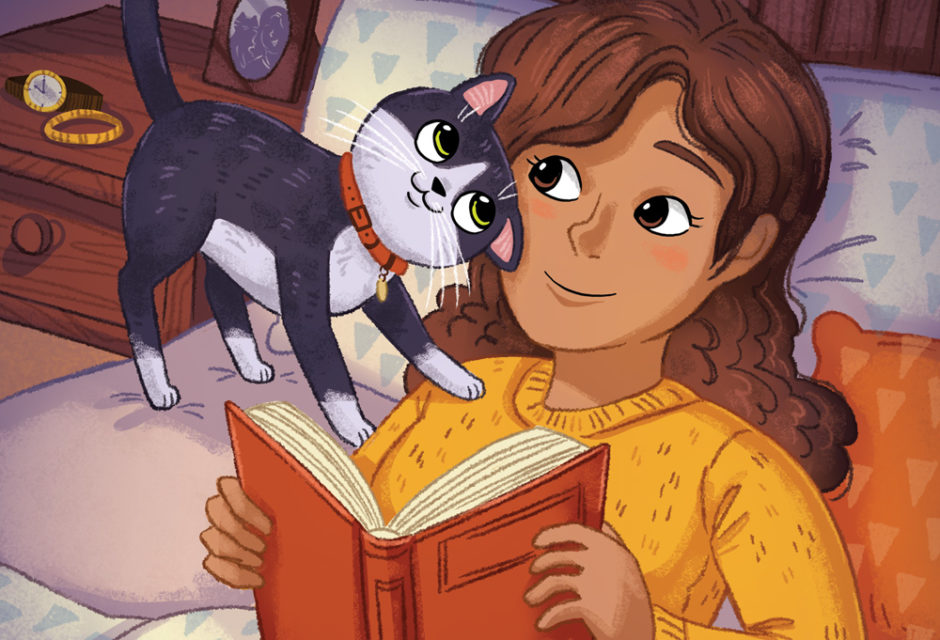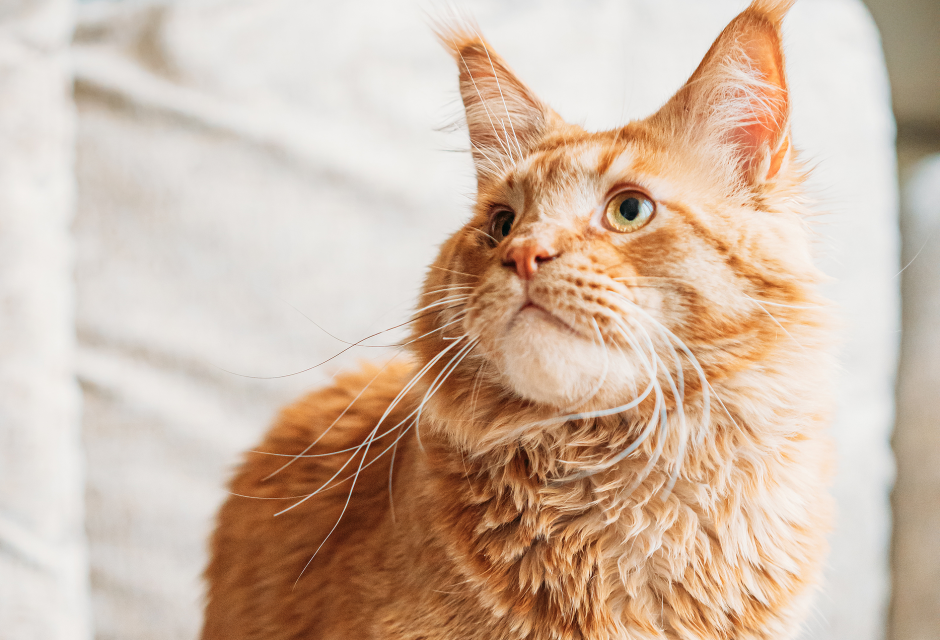
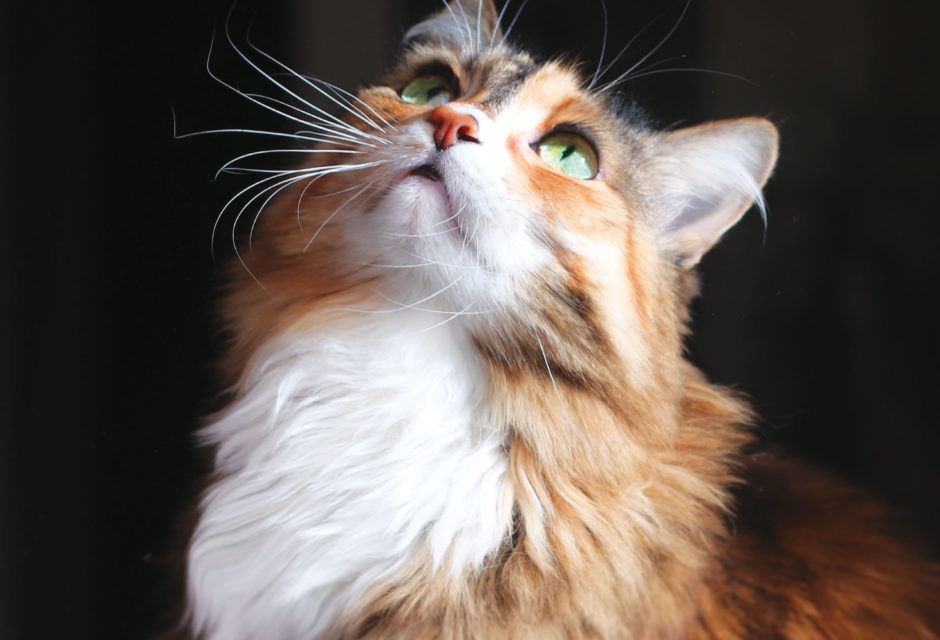
Vision and Hearing Loss in Cats
Causes, the sometimes-subtle signs, and how you can help your cat adapt
At around 19 years of age, Sylvia Smith’s family cat, Loekie, did something that caught her attention: he walked right into a chair.
“In my dad’s house, things were hardly ever moved, so Loekie knew his way around well, says Sylvia, who lives in Gouda, the Netherlands. “One day after vacuuming, my dad moved a chair back a little less than he normally did, and the cat walked right into it. It was just a few centimetres off—we could tell by the mark in the carpet.” That’s when the family knew: Loekie couldn’t see anymore. “After that, we just made sure that everything was in place and nothing was moved—the house, the garden, his food and water,” says Sylvia. “As long as things are where they should be, it’s no problem at all.”
Loekie also learned to make a wide berth around furniture he knew moved often, such as kitchen chairs. On the family’s part, they made concessions for him. “We would always be aware of bags and stuff on the floor if he was there, because we knew he could bump into that.”
Like Sylvia, Susan Harris also had subtle clues that her cat had lost one of her senses—but for 14-year-old Lahara, it was her hearing. “We just noticed a few months ago that she has lost most of her hearing,” the Orting, WA resident shared on Modern Cat’s Facebook page. “If she’s not sure where we are, she’ll sit and meow loudly until one of us goes to her.”
Lahara can still hear some high frequencies, however. “If we clap our hands loudly or my husband whistles, she can hear it.” Susan, too, has made adjustments to communicating with her cat—she stomps on the floor to get her attention, pets her gently to wake her, and watches her carefully when she is outdoors.
While hearing or vision loss in cats are usually a by-product of aging, hearing and vision impairment can also be caused by accidents, injury, disease, and birth defects. In many of these instances, hearing and vision loss can only be addressed by adjusting the cat’s—and his or her human’s—lifestyle and environment. Sometimes, however, conditions can be corrected by treating the underlying cause.
Causes of Vision and Hearing Loss in Cats
If you think that your pet is losing their vision or hearing, you should see your primary care veterinarian as soon as you can, says Dr. Danny Joffe. Some causes of vision loss, including hypertension (high blood pressure), are manageable, as are ear infections and eye infections. Addressing cataracts or taurine deficiency (an essential amino acid for cats) can also help with vision loss.
For hearing, removing impacted wax or non-cancerous tumours are two root causes that can be treated. “Unfortunately, most of the other causes are not treatable, but your veterinarian can give you some very good ideas on how better to manage a pet that has become blind or deaf,” says Dr. Joffe, National Medical Director for VCA Canada and founder of Landing Animal Clinic, in Calgary, AB and Calgary Animal Referral and Emergency Centre (C.A.R.E. Centre), a 22-vet, multi-specialist referral and emergency clinic where he is currently medical director.
“Cats that develop very severe eye infections that are not treated (e.g. stray cats) can lose vision as their corneas (the clear outer layer of the eye) become opaque; this can happen at any age,” says Dr. Joffe. “Blindness more commonly happens in older cats from two different pathological processes. High blood pressure (hypertension) is common in cats, and if it is severe it can lead to retinal detachment which would lead to acute blindness—this tends to happen in middle age (eight years and up).”
“When cats lose their hearing they may vocalize very loudly—some cats can get very loud if they go deaf.”
Another common cause of blindness in older cats is retinal degeneration where the retina slowly deteriorates over time, leaving a cat blind, says Dr. Joffe. “In these cases, the client sometimes does not even realize that their pet is blind as it comes on so gradually that the cat adapts to the change and it does not faze them at all. This tends to happen from two to five years of age—though a congenital form of the disease that happens at two to three months of age occurs rarely.”
Signs Your Cat is Losing Her Vision
So how can you tell that your cat has lost his or her vision? Signs of sight loss could include walking very carefully, bumping into things initially, and being less active, says Dr. Dan Gilchrist, who founded the Waterville Veterinary Clinic, a small animal practice in Waterville N.Y. Owners might notice that their cats have “fully dilated pupils even in bright light; lack of menace reflex (not reacting or not blinking in response to a rapid movement of the hand toward the eyes); and the cat being careful not to cause air movement on the eyes that would cause a blink.” Dr. Joffe adds, “if cats lose their vision slowly, for example from retinal degeneration, many people cannot even tell that the cat is blind as they adapt very well. If vision loss happens quickly, for instance with high blood pressure leading to retinal detachment, then the cat may bump into things when walking, they act like they are disoriented or confused, and they may vocalize more than normal.” In the end, medical causes for cats losing their sight—trauma, neurological problems, and high blood pressure—are more common than genetic ones. Rarely, cats are blind at birth from a congenital malformation, says Dr. Joffe.
Signs & Symptoms of Hearing Loss in Cats
Hearing loss in cats has its own set of signs and symptoms.
“Cats that lose their hearing often sleep very soundly or seem startled when you try and wake them up,” says Dr. Joffe. “As well, when cats lose their hearing they may vocalize very loudly as they cannot hear, so they do not modulate their tone—some cats can get very loud if they go deaf.” They also startle easily, and may not notice if their owner enters a room. A deaf cat with a hearing housemate may also look at the hearing cat for visual clues about what is going on.
According to Dr. Joffe, there are many reasons for a cat to lose his or her hearing. “Cats can be born deaf (congenital deafness)—this trait is linked to a white coat colour (and potentially to blue eye colour), though not all white cats are deaf. In older cats (likely over 12 years of age) deafness can just be an age-related change due to alterations in the nerves utilized in hearing as they age. Very severe ear infections, or masses (mostly benign) can lead to deafness. Sometimes the explanation is simple. “Some ear medications can block the ear canal and lead to deafness at any age that potentially can be fixed by removing the ’clump’ of medication,” says. Dr. Joffe.
How to Test Your Cat’s Hearing
If the owner is still not sure, Dr. Gilchrist suggests “a test can be done when the animal is sleeping with a metal saucepan and metal spoon—rapping the pan in the cat’s proximity, loudly. Lack of response would be diagnostic in this case. Also, standing behind the cat and making a loud whistle or doing so with a referee’s whistle to note any response would be diagnostic as well.”
For many cat parents, having a feline with hearing or vision loss doesn’t make for more work nor more stress (for the cat or the owner) and does not impact the relationship between the cat and his or her owner.
How Blind Cats Adapt
Two of Sarah Quincey’s five cats are blind, but they are so well adjusted that people rarely notice right away that Hank, a three-year-old black and white domestic shorthair, and Tillie, a five-year-old domestic shorthair calico, cannot see.
The cats, who both had their eyes removed as kittens (Tillie had reversed lenses and Hank had a severe eye infection caused by keratitis), are just like regular cats, says Sarah. “They love chasing toys, playing in boxes, climbing up on towers, and even ‘watching birds’—My Hank and Tillie both move their ears and heads to birds movements outside. And Hank has even caught flies and wasps… both of them will climb, play, fight, run, explore like the rest. When people are over, they don’t even believe they’re blind because, despite them having no eyeballs, you can’t tell.”
Cats utilize their other senses to figure things out, says Sarah. Her own cats use their hearing and their sense of smell. “But I also catch them reaching out paws, or slowly putting their head out to test things as well. If they climb up on a tower and are trying to get down, they reach their paws out to see how far the next level is.”
How to help a blind cat
- Consider keeping your cat restricted to certain rooms or levels of the house to keep him from falling down stairs or accidentally getting outside. If your cat has to go outside, consider using a harness and a leash, or putting her in an enclosed garden.
- Once a blind cat learns the lay of the land at home, try not to change anything. Keep food and litter boxes in the same place.
- Blind cats love toys that make noise due to their heightened sense of hearing.
- Talk to your cat frequently.
- Microchip your cat and attach your name and number on his collar in case he gets out and wanders too far from home.
How to help a deaf cat
- To get your cat’s attention, tap your foot on the floor or knock against a surface.
- Provide your cat with safe forms of visual stimulation. Get down to his or her level, and provide safe toys and decor in your home so that if anything falls and your cat cannot hear the warning sounds, he or she will not be hurt.
- Use body language to communicate. Extend your hand to call your cat, wave your hands or use a spray bottle to squirt water to correct bad behaviour.
- Stick with a routine for mealtimes and feeding locations.
- A deaf cat cannot hear predators approach. Keep your cat indoors, or in an outdoor enclosure to protect him.
- For any cat with a sensory loss, the most important thing is to be patient.
Amazing Ways Cats Adapt to Hearing & Vision Loss
Many cats adapt to their disability, sometimes in unusual ways. Julie Jackson once fostered a blind tortoiseshell cat that learned to beg for treats.
Aurora, a five-year-old former stray that was missing one eye and blind in the other, loved chicken and could smell, but not see it. “She would sit upright wherever she was and beg… much like a dog, waving her tiny paws whenever she smelled chicken,” says Julie, who lives in Richmond, VA. “I laughed so hard the first time I saw it. I was so unprepared! Needless to say, it totally worked and she got a few tasty bites of chicken.”
An animal abuse survivor, Geordie has also adapted after losing his eyes after they were gouged out when he was a kitten.
In the year and a half that Shawna Pooler has had him, Geordie has “adapted so well (that) when people come over, they do not realize he is blind,” says Shawna.
“Geordie was a hot mess when I got him. He was angry and aggressive because he could not see,” says the Jefferson City, Missouri resident. “Working with him in a constant environment has really helped him. He is more confident and sure of himself. Now he is a very loving cat.”
Tips & Tricks For Helping Blind and Deaf Cats
There are a few ways that Shawna tries to help Geordie out. She keeps Geordie’s surroundings the same. And as a volunteer foster pet parent for People Helping Paws Cat Rescue, she lets Geordie smell the new kittens she brings home. “When something is different, he will immediately put his paws out in front and swat around.”
“For those cats that have lost sight it’s important to keep their environment unchanged,” seconds Dr. Gilchrist. “They get along fine if the furniture and other objects stay in place. Keep them confined to a one floor space if possible. Sign language is useful with deaf cats. Sometimes they can hear high pitched sound like a referee’s whistle which can be used to get their attention.”
For the most part, many pet parents don’t have to worry. “The incidence of blindness and deafness in the general population of cats is low in my experience,” says Dr. Gilchrist. What cat owners can do is to get their feline friend regular physical exams. Dr. Gilcrest recommends once a year, plus anytime a concern comes up, to ensure early treatment before health conditions lead to hearing or sight loss. “Vets and owners can work together,” he says, “to watch out for high blood pressure accompanying heart conditions and hyperthyroidism in cats, which, if left untreated, can lead to blindness, as well as ear infections, eye infections or irritated eyes or hyperthyroidism, which can be detected and treated before irreversible damage is done.”
For Shawna, there’s no inconvenience. Of Geordie, she says, “he honestly does not require any more care than my sighted cats,” says Shawna. “He is not any more expensive and he is just as loving and fun as they are. All my personal cats are special needs and they are no more trouble than a perfect kitten or cat.”
Join the newsletter and never miss out on cat content again!
"*" indicates required fields
By clicking the arrow, you agree to our web Terms of Use and Privacy & Cookie Policy. Easy unsubscribe links are provided in every email.







